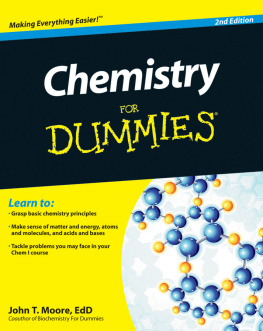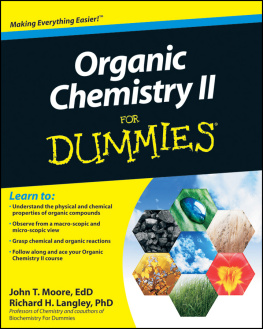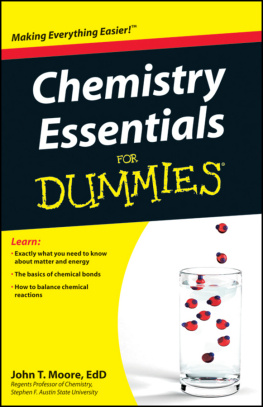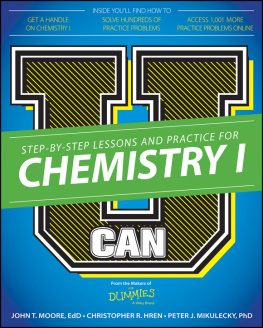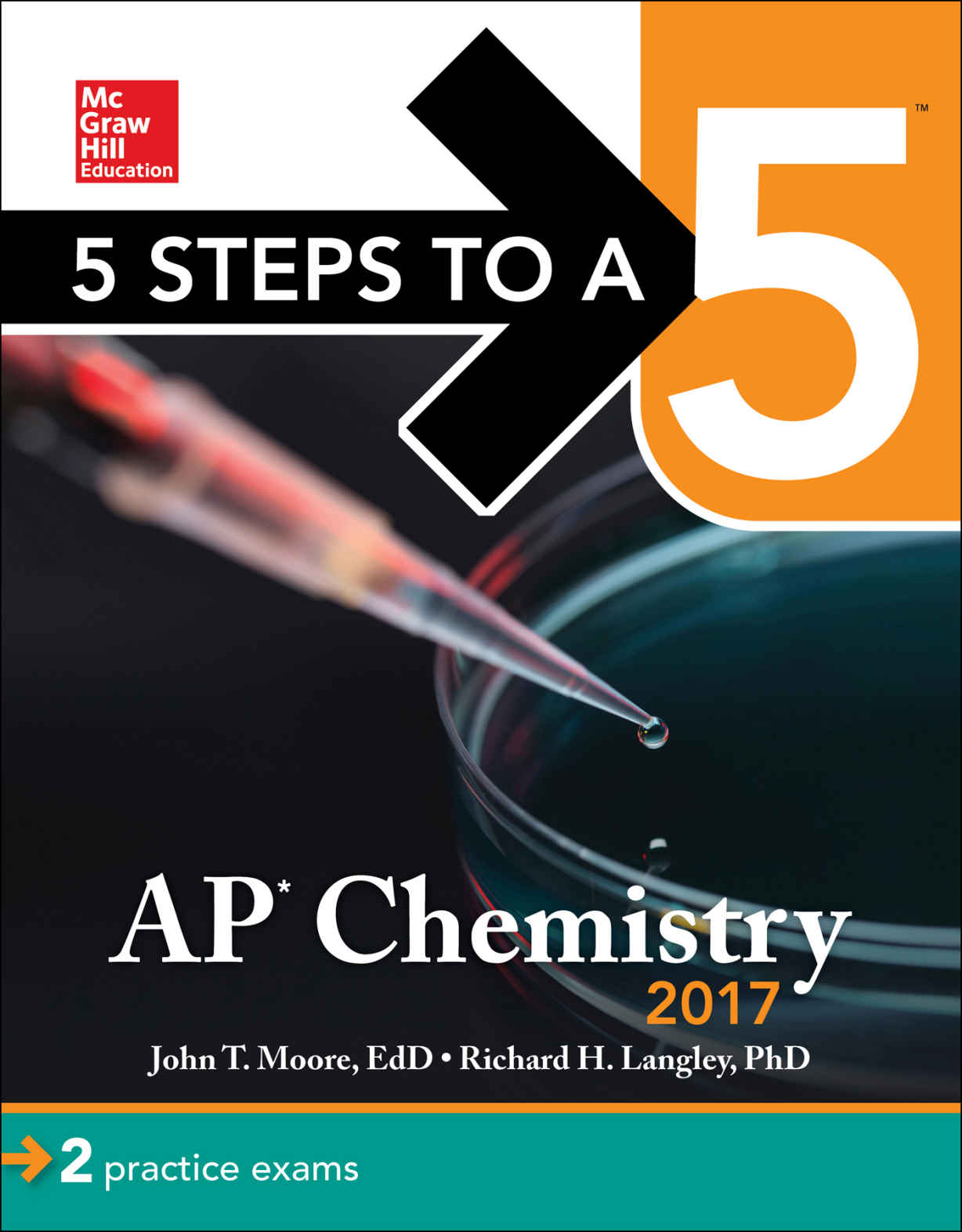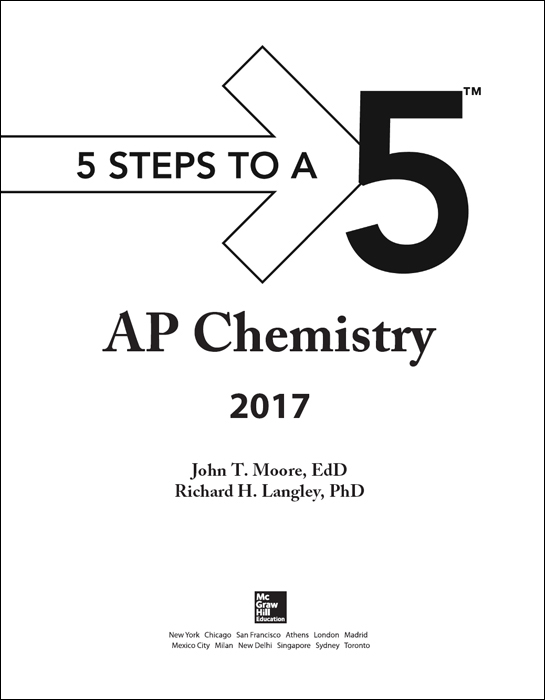Copyright 2016, 2015, 2014, 2013 by McGraw-Hill Education. All rights reserved. Except as permitted under the United States Copyright Act of 1976, no part of this publication may be reproduced or distributed in any form or by any means, or stored in a database or retrieval system, without the prior written permission of the publisher, with the exception that the program listings may be entered, stored, and executed in a computer system, but they may not be reproduced for publication.
ISBN: 978-1-259-58648-4
MHID: 1-259-58648-0
The material in this eBook also appears in the print version of this title: ISBN: 978-1-259-58647-7,
MHID: 1-259-58647-2.
eBook conversion by codeMantra
Version 1.0
All trademarks are trademarks of their respective owners. Rather than put a trademark symbol after every occurrence of a trademarked name, we use names in an editorial fashion only, and to the benefit of the trademark owner, with no intention of infringement of the trademark. Where such designations appear in this book, they have been printed with initial caps.
McGraw-Hill Education eBooks are available at special quantity discounts to use as premiums and sales promotions or for use in corporate training programs. To contact a representative, please visit the Contact Us page at www.mhprofessional.com.
McGraw-Hill Education, the McGraw-Hill Education logo, 5 Steps to a 5, and related trade dress are trademarks or registered trademarks of McGraw-Hill Education and/or its affiliates in the United States and other countries and may not be used without written permission. All other trademarks are the property of their respective owners. McGraw-Hill Education is not associated with any product or vendor mentioned in this book.
AP, Advanced Placement Program, and College Board are registered trademarks of the College Board, which was not involved in the production of, and does not endorse, this product.
TERMS OF USE
This is a copyrighted work and McGraw-Hill Education and its licensors reserve all rights in and to the work. Use of this work is subject to these terms. Except as permitted under the Copyright Act of 1976 and the right to store and retrieve one copy of the work, you may not decompile, disassemble, reverse engineer, reproduce, modify, create derivative works based upon, transmit, distribute, disseminate, sell, publish or sublicense the work or any part of it without McGraw-Hill Educations prior consent. You may use the work for your own noncommercial and personal use; any other use of the work is strictly prohibited. Your right to use the work may be terminated if you fail to comply with these terms.
THE WORK IS PROVIDED AS IS. McGRAW-HILL EDUCATION AND ITS LICENSORS MAKE NO GUARANTEES OR WARRANTIES AS TO THE ACCURACY, ADEQUACY OR COMPLETENESS OF OR RESULTS TO BE OBTAINED FROM USING THE WORK, INCLUDING ANY INFORMATION THAT CAN BE ACCESSED THROUGH THE WORK VIA HYPERLINK OR OTHERWISE, AND EXPRESSLY DISCLAIM ANY WARRANTY, EXPRESS OR IMPLIED, INCLUDING BUT NOT LIMITED TO IMPLIED WARRANTIES OF MERCHANTABILITY OR FITNESS FOR A PARTICULAR PURPOSE. McGraw-Hill Education and its licensors do not warrant or guarantee that the functions contained in the work will meet your requirements or that its operation will be uninterrupted or error free. Neither McGraw-Hill Education nor its licensors shall be liable to you or anyone else for any inaccuracy, error or omission, regardless of cause, in the work or for any damages resulting therefrom. McGraw-Hill Education has no responsibility for the content of any information accessed through the work. Under no circumstances shall McGraw-Hill Education and/or its licensors be liable for any indirect, incidental, special, punitive, consequential or similar damages that result from the use of or inability to use the work, even if any of them has been advised of the possibility of such damages. This limitation of liability shall apply to any claim or cause whatsoever whether such claim or cause arises in contract, tort or otherwise.
ABOUT THE AUTHORS
JOHN MOORE grew up in the foothills of western North Carolina. He attended the University of North CarolinaAsheville, where he received his bachelors degree in chemistry. He earned his masters degree in chemistry from Furman University in Greenville, South Carolina. After a stint in the United States Army he decided to try his hand at teaching. In 1971 he joined the faculty of Stephen F. Austin State University in Nacogdoches, Texas, where he still teaches chemistry. In 1985 he started back to school part-time, and in 1991 received his doctorate in education from Texas A&M University. In 2003 his first book, Chemistry for Dummies, was published.
RICHARD LANGLEY grew up in southwestern Ohio. He attended Miami University in Oxford, Ohio, where he earned bachelors degrees in chemistry and mineralogy and a masters degree in chemistry. He next went to the University of Nebraska in Lincoln, where he received his doctorate in chemistry. He took a postdoctoral position at Arizona State University in Tempe, Arizona, then became a visiting assistant professor at the University of WisconsinRiver Falls. He has taught at Stephen F. Austin State University in Nacogdoches, Texas, since 1982.
The authors are coauthors of Chemistry for the Utterly Confused, Biochemistry for Dummies, and Organic Chemistry II for Dummies.
Both authors are graders for the free-response portion of the AP Chemistry exam. In fact, between them, they have over twenty-five years of AP grading experience and estimate that together they have graded over 125,000 exams.
CONTENTS
PREFACE
Welcome to the AP Chemistry Five-Step Program. The fact that you are reading this preface suggests that you will be taking the AP exam in chemistry. The AP Chemistry exam is constantly evolving and so this guide has evolved. We have updated the book to match the new AP Chemistry exam. The new exam has an emphasis on setsa series of questions that refer to the same given information, along with changes in the free-response portion.
The AP Chemistry exam certainly isnt easy, but the rewards are worth itcollege credit and the satisfaction of a job well done. You will have to work and study hard to do well, but we will, through this book, help you to master the material and get ready for the exam.
Both of us have many years of experience in teaching introductory general chemistry at the university level. John Moore is the author of Chemistry for Dummies, and he and Richard Doc Langley have also written Chemistry for the Utterly Confused, a guide for college/high school students. Each of us has certain skills and experiences that will be of special help in presenting the material in this book. Richard has also taught high school science, and John has years of experience teaching chemistry to both public school teachers and students. Both of us have been graders for the AP Exam chemistry free-response questions for years and have firsthand knowledge of how the exam is graded and scored. We have tried not only to make the material understandable but also to present the problems in the format of the AP Chemistry exam. By faithfully working the problems you will increase your familiarity with the exam format, so that when the time comes to take the exam there will be no surprises.
Use this book in addition to your regular chemistry text. We have outlined three different study programs to prepare you for the exam. If you choose the yearlong program, use it as you are taking your AP Chemistry course. It will provide additional problems in the AP format. If you choose one of the other two programs, use it with your chemistry textbook also; but you may need to lean a little more on this review book. Either way, if you put in the time and effort, you will do well.


